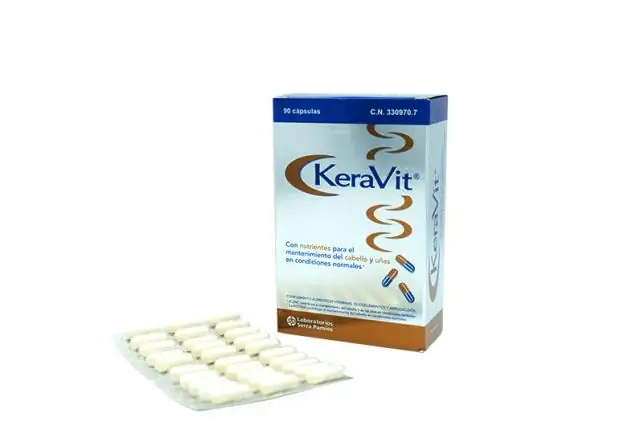- Author Rachel Wainwright [email protected].
- Public 2023-12-15 07:39.
- Last modified 2025-11-02 20:14.
Nicotinamide
Instructions for use:
- 1. Release form and composition
- 2. Indications for use
- 3. Contraindications
- 4. Method of application and dosage
- 5. Side effects
- 6. Special instructions
- 7. Drug interactions
- 8. Analogs
- 9. Terms and conditions of storage
- 10. Terms of dispensing from pharmacies
Nicotinamide is a vitamin agent similar in structure to nicotinic acid.
Release form and composition
Dosage forms:
- Substance powder (1, 5, 10, 15, 20, 25, 30 and 50 kg in polyethylene bags (sacks), in a fiber drum 1 bag; 50 kg in plastic bags, in a cardboard drum 1 bag; 5, 10, 15 and 20 kg in polyethylene bags);
- Tablets 0.025 and 0.005 g (50 pcs. In a package);
- Solution for injection (1% and 2.5% - in 1 ml ampoules, 5% - in 2 ml ampoules, 10 ampoules in a package).
The active substance of the drug is nicotinamide.
Indications for use
- Avitaminosis PP (pellagra);
- Diabetes;
- Heart disease;
- Enterocolitis;
- Gastritis with low acidity;
- Chronic colitis;
- Peptic ulcer and 12 duodenal ulcer;
- Liver disease;
- Hepatitis;
- Cirrhosis of the liver;
- Sluggish ulcers and wounds.
Contraindications
- Angina pectoris;
- Severe arterial hypertension;
- Hypersensitivity to the drug.
Method of administration and dosage
Nicotinamide is administered orally, intravenously, intramuscularly, subcutaneously.
Therapeutic doses are selected individually, depending on the severity of PP vitamin deficiency, prophylactic - in accordance with the daily requirement.
Inside the drug should be taken after meals. Recommended doses:
- Pellagra: adults - 0.05-0.1 g 3-4 times / day, children - 0.01-0.05 g 2-3 times / day. The course of therapy is 15-20 days;
- Prevention of pellagra: adults - 0.015-0.025 g, children - 0.005-0.01 g. Frequency rate of application - 1-2 times a day;
- Other indications: adults - 0.02-0.05 g, children - 0.005-0.01 g. Frequency rate of application - 2-3 times a day.
Parenterally (intramuscularly, intravenously and subcutaneously), 1-2 ml of solution is injected 1-2 times a day (the rate of administration is no more than 0.002 g per minute).
Side effects
When taking high doses of Nicotinamide inside, the following are possible: diarrhea, dizziness, arrhythmia, dry skin and mucous membranes of the eyes, thirst, nausea, vomiting, myalgia, peptic ulcer, hyperuricemia, glucosuria, hyperglycemia, debilitating itching.
In patients who use the drug for a long time, cholestasis and fatty degeneration of the liver are sometimes noted.
After intravenous administration, in rare cases, allergic reactions occur in the form of itching, rash and stridor breathing.
special instructions
For the prevention of PP hypovitaminosis, a balanced diet is more preferable than the use of Nicotinamide.
During treatment with the drug, liver function should be monitored. In order to prevent the development of fatty degeneration in the diet, it is recommended to include foods rich in methionine, or to take methionine and other lipotropic drugs.
Nicotinamide is not intended for use as a lipid-lowering drug.
To reduce the irritating effect of Nicotinamide tablets on the mucous membrane of the gastrointestinal tract, it is recommended to drink them with milk.
Drug interactions
There is no information on interactions with other medicinal products.
Analogs
Nicotinamide analogs are: Aminicotine, Benikot, Endobion, Niacevit, Bepella, Niacinamide, Nikofort, Nicotol, Nicotinic acid, Nikamid, Pelmin, Neurovitan, Folic acid, Bepanten.
Terms and conditions of storage
Store at temperatures up to 25 ˚С. Do not expose to sunlight and moisture.
The shelf life is 5 years.
Terms of dispensing from pharmacies
Available without a prescription.
Information about the drug is generalized, provided for informational purposes only and does not replace the official instructions. Self-medication is hazardous to health!






